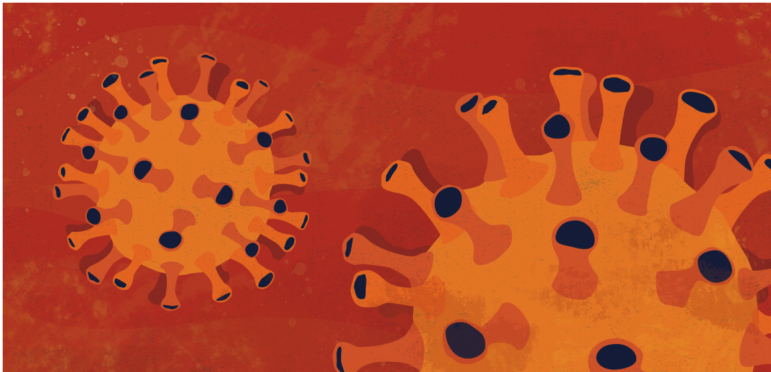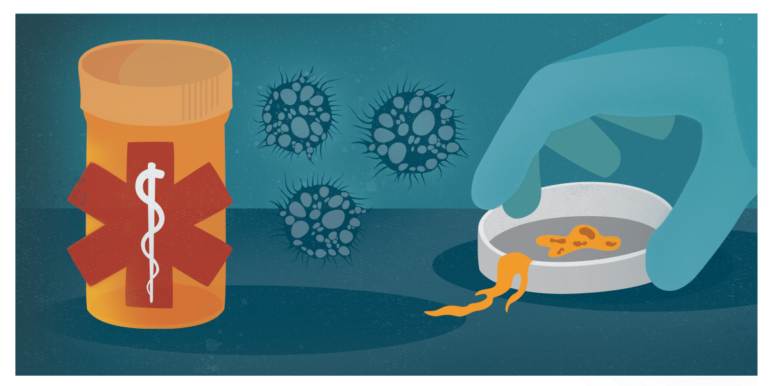

Health and Medicine Guide: Chapter 3
Read this article in
Guide Resource
Investigating Health and Medicine
Chapter Guide Resource
Health and Medicine Guide: Preface
Chapter Guide Resource
Health and Medicine Guide: Introduction
Chapter Guide Resource
Health and Medicine Guide: Chapter 1
Chapter Guide Resource
Health and Medicine Guide: Chapter 2
Chapter Guide Resource
Health and Medicine Guide: Chapter 3
Chapter Guide Resource
Health and Medicine Guide: Chapter 4
Chapter Guide Resource
Health and Medicine Guide: Chapter 5
Chapter Guide Resource
Health and Medicine Guide: Appendix
The Scientific Basis of Influence
Tip 1: You Are Being Influenced
“We are pattern seekers, believers in a coherent world.” —Nobel-prize winning psychologist Daniel Kahneman
One of the first things you learn as an investigative reporter is to beware of unconscious biases, including what is known as “anchoring” or “cognitive tunneling.” Neuroscience has shown that we tend to give more value to confirming, and less value to invalidating information. An example is The Invisible Gorilla Strikes Again experiment. Asked to identify lung nodules in CT scans, 20 out of 24 radiologists missed an image outlined in white of a gorilla that researchers inserted in the images, although it was more than 48 times the size of the nodules doctors were asked to identify.
In some situations, the stronger the expectation, advantage, or threat of loss, the stronger the impact is on our thought processes — despite the fact that we are convinced of our own objectivity. In the field of health journalism, the risk of falling for appealing though flawed connections is substantial, and its consequences are significant.
Also, the science of influence underpins conflicts of interest, which are pervasive in science and medicine and whose impact on studies outcomes and practitioners’ attitudes have been studied at length. There is a vast amount of literature on the topic, but a good read to start with is the systematic review Scope and Impact of Financial Conflicts of Interest in Biomedical Research. The negative impact of these conflicts is undisputed, and that’s why their disclosure is mostly compulsory, even if this is not always or consistently enforced.
It is also important to understand cognitive tunneling because the protagonists in your investigation may tell you they are “able to manage” conflicts of interest. In fact, research has shown this is not feasible, as influence acts at an unconscious level. As behavioral economist George Loewenstein put it: “Conflicts of interest will inevitably bias physician behavior, however honorable and well-intentioned specific physicians may be. Bias may distort their choices, or they may look for and unconsciously emphasize data that support their personal interests.”
Tip 2: Beware of Key Opinion Leaders
Despite the gains made by Evidence-Based Medicine, Eminence-Based Medicine still exists. The difference between the two terms, which are largely known in the medical-scientific community, is duly explained in this Students 4 Best Evidence tutorial. Basically, we tend to believe “the experts.” The longer their résumés, the more credibility we attach to their statements. Moreover, our relation to medical doctors is determined by a phenomenon known as the The White-Coat Effect. The industry relies on this in its marketing strategies where Key Opinion Leaders (KOLs) play a crucial role. KOLs are industry- designated doctors and scientists whose biographies and affiliations are perceived as prestigious. They are often, at the same time, consultants for industry, the government, and international organizations such as the WHO.
Companies engage them in every step of a product life cycle, and journalists tend to turn to them for quotes and advice, as they are considered “experts in the field.” KOLs populate the boards of medical societies, write guidelines, teach in medical schools, and give training in Continuing Medical Education systems.
Exposing conflicts of interest is worthwhile and a source of many good stories. Financial interests are not the only area to investigate; reputation, status, titles, and recognition play a role, too.
In several countries, pharmaceutical and medical devices manufacturers are required by law to release details of their payments to doctors and scientists. The data is available in databases like the US Open Payments or the French Base Transparence Santé.
A recent increase in public awareness and media coverage of pharma money prompted the industry to launch “transparency” initiatives like the Pharma Cooperation Code issued by the European Federation of Pharmaceutical Industries and Associations. Such datasets are typically difficult to analyze, as information is presented in various formats and published on single company websites. Projects like ProPublica’s Dollars for Docs and CORRECTIV’s Euros for Doctors try to go beyond these limitations. As the health market is global, it is worth searching extensively; a payment to a KOL could be made by a different office or branch of the company.
It is best practice to ask your expert about his or her conflicts of interest, and do your own research as well. You can start by checking what was declared in publications and advisory committees. Don’t stop at that, though: KOLs tend to be selective in what they disclose. Search for abstracts and programs from medical conferences, industry press releases, and news stories. Don’t forget to check the Justia patents registry and any organization sponsoring a research program being led by your expert.
Conflict of interest disclosures have limitations and don’t tell the full story. Many studies show that declarations provided by authors and advisory committee members are often false and/or incomplete. In addition, publications rarely apply the sanctions stated in their guidelines; medical journals and institutions don’t routinely assess the accuracy of declarations of interest, nor impose sanctions for incomplete or inaccurate disclosure. In the end, conflict of interest disclosures are just not reliable.
As pointed out by the Swiss Academy of Medical Sciences, transparency cannot constitute a goal in and of itself: “What is ethically problematic about conflicts of interest is not primarily the fact that they are invisible, but that they can influence the behavior of medical researchers and other medical professionals at the treatment/research interface in a way that runs counter to patients’ best interests.”
Conflicts of interest also play a role in what is called “disease mongering”— defined by the Public Library of Science as the “selling of sickness in order to promote drug sales.” It is also a factor in overdiagnosis, considered by some critics the biggest risk for the public health systems of richer countries. Read what overdiagnosis is, and isn’t, in this fact sheet by the Institute for Quality and Efficiency in Health Care. Other good reads are: The New York Times’ What’s Making Us Sick Is an Epidemic of Diagnoses, the disease mongering special edition of PLOS biomedical journal, and the British Medical Journal series Too Much Medicine.
There is a global movement of doctors, starting in the 2000s with the No Free Lunch campaign, who have recognized the impact of conflicts of interest and pledge to accept no industry gifts and to rely on non-promotional sources of prescribing information. Worldwide there are organizations of scientists and doctors working on the prevention of overdiagnosis (see Appendix); these people are also generally well-versed in both Evidence-Based Medicine and industry marketing strategies.
A list of Industry-Independent Health Experts is available at the Lown Institute website. The Lown List was first created by journalists Jeanne Lenzer and Shannon Brownlee who announced the project in a 2008 BMJ article entitled Naming Names: Is There an (Unbiased) Doctor in the House? The four List coordinators, Jeanne Lenzer, Gary Schwitzer, Shannon Brownlee, and Adriane Fugh-Berman, were recently joined by the authors of this guide, Catherine Riva and Serena Tinari. The List is also posted at HealthNewsReview.org and on Jeanne Lenzer’s website.
Be aware of marketing strategies like disease awareness campaigns which aim to create a market for a certain drug (“Ask your doctor . . . ”), and be cautious with industry-funded patients’ organizations. This hilarious presentation by Lisa Schwartz and Steven Woloshin at the 2018 Preventing Overdiagnosis Conference perfectly illustrates these methods. There is a lot of literature on this topic, as well as a database by Kaiser Health News: Prescription for Power, Investigating the Relationships Between Patient Advocacy Groups and Big Pharma.
Examples of awareness campaigns and patients’ organizations that served industry agendas are Mother Jones’ Unsealed Documents Show How Purdue Pharma Created a ‘Pain Movement‘, and The Guardian’s story from Australia, Pharmaceutical Companies Spent $34m on Patient Advocacy Groups, Research Finds.
Tip 3: Conflicts of Interest in Health Journalism
Some media and health journalism organizations receive funding from the very industry they are reporting on, which raises important issues about conflicts of interest.
The 2019 World Conference of Science Journalists was co-sponsored by Johnson & Johnson, with the company hosting a luncheon and pledging additional donations if the hashtag for its #ChampionsofScience campaign was used on social media. At the same conference, Bayer offered a lunch called “Raising the Bar on Sustainability and Transparency.”
The Bill and Melinda Gates Foundation — by far the largest private foundation in the United States — is especially active in funding health journalism. The foundation, whose stated goals include enhancing health care, has made huge donations to develop new drugs, vaccines, and health monitoring systems. It also has held corporate stocks and bonds in drug companies such as Merck, GlaxoSmithKline, Eli Lilly, Pfizer, Novartis, and Sanofi, according to a 2020 investigation in The Nation by Tim Schwab. The main donor since 2015 of South Africa’s Bhekisisa Centre for Health Journalism, the foundation contributes to the Global Development section of the Guardian, the health reporting grants of the European Journalism Center, and the International Center for Journalists, also supported by Johnson & Johnson. For more on the Gates Foundation’s involvement with journalism, see the Columbia Journalism Review’s two features by Robert Fortner, How Ray Suarez Really Caught the Global Health Bug and The Web Grows Wider.
Tip 4: Connect the Dots
It’s tempting to focus on the “usual suspects” when you investigate health and medicine: manufacturers, insurers, and prominent players. However, the reality is much more complicated. Marketing strategies by players in the health industry have become increasingly sophisticated, and because they make decisions that affect public health, journalists need to dig deep and investigate the multiple players in the system.
At Re-Check.ch we have come to realize that we have to include the “big picture” in our research. This means investigating as wide a range of institutions as possible, including nongovernmental organizations and the media. A practical example is our five-part investigation (in French) into the interests surrounding mammography screening programs — a complex maze with many lobbies at work. The investigation received an award from the Swiss Academy for Medical Sciences.
Two Canadian researchers, Sergio Sismondo and Marc-André Gagnon, have been developing this “big picture” angle, calling it Ghost Management. It postulates that because of current business models, rather than producing innovative treatments, pharmaceutical firms focus more on influencing medical knowledge, shaping scientific narratives, influencing experts by nurturing conflicts of interest, capturing regulation and policymakers, and shaping media and culture in ways that allows maximizing profits. This means, as Gagnon put it, that the “dominant business model of the pharmaceutical sector is based on the massive promotion of drugs that often do not represent any significant therapeutic advance. Clinical research is therefore run like a promotional campaign. The data obtained from clinical research are primarily used to boost and support sales rather than to improve prescribing behaviour.” (Note: The authors of this guide, Catherine Riva and Serena Tinari, are working together with the two scholars on a research project on Ghost Management.)
These marketing efforts are intended not only to shape doctors’ knowledge of the condition and their prescription habits (medical knowledge), but also to shape the political debate and people’s habits of thought. Ghost Management includes an effective methodology to dig deeper, and the practical application of these theories produce amazing visualizations like these.
















